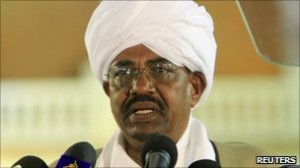 Sunday’s referendum in southern Sudan gives voters a choice between staying united with the rest of Sudan or becoming an independent country.
Sunday’s referendum in southern Sudan gives voters a choice between staying united with the rest of Sudan or becoming an independent country.
The poll was agreed to in the 2005 Comprehensive Peace Agreement that ended Sudan’s 21-year north-south civil war.
Voters entering polling booths will see two symbols. One shows two hands clasped together, symbolizing unity. The other shows the single palm of a hand, symbolizing separation.
Most analysts predict southerners will choose independence. The new country would be Africa’s first since Eritrea won independence in 1993.
To make the transition go smoothly, however, the north and south will have to resolve several major issues involving borders, citizenship rights, water, and most of all, oil.
The sides have yet to agree on how to split revenue from wells in the south that produce about a half-million barrels of oil per day.
An agreement is necessary because while the south produces the oil, the pipelines that lead to export terminals run through the north.
The sides also remain split over the fate of the oil-producing Abyei region. Abyei was once scheduled to hold a separate referendum Sunday on whether to join the north or the south.
But the poll was put off because of disputes over who would be eligible to vote.
The disputes have sparked fears that regardless of the outcome Sunday, Sudan may plunge back into civil war.
Sudanese President Omar al-Bashir lessened those fears slightly this week when during a visit to the south, he said the north will “celebrate” the south’s independence if that is what voters choose.
He also pledged to give the new country technical and logistical support as it tries to get established.
Referendum organizers said this week that they are “100 percent prepared” for the poll. They said that nearly 4 million people – about half of the south’s population – have registered to vote. VOA
Leave a Reply
You must be logged in to post a comment.